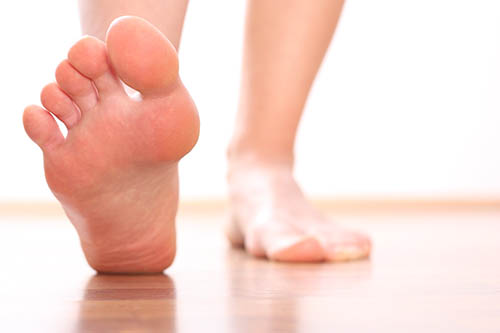
According to the Centers for Disease Control and PRevention, more than 100 million Americans are living with diabetes or prediabetes. Anyone who is diagnosed with diabetes is at risk for a foot ulcer. Therefore, it is important for patients with diabetes to take action against foot ulcers through prevention and early detection.
Our team at UAB Medical West wants to offer you tips on how you can prevent food problems associated with diabetes, as well as ways to treat the condition should a diabetic foot ulcer appears.
What Is a Diabetic Foot Ulcer?
The American Podiatric Medical Association states that 15-percent of people living with diabetes will suffer from a diabetic foot ulcer. Will you be one of them?
A diabetic foot ulcer occurs when there is an open sore or wound at the bottom of a person’s foot. Because diabetes can affect a person’s feelings in their foot and leg, they might not be able to feel that a cut on the bottom of their foot has occurred. As a result, they do not treat the cut/wound and a foot ulcer begins to appear.
Signs and symptoms of a foot ulcer include:
- Burning
- Callused or thickened skin around the ulcer
- Chills
- Dry, scaly skin
- Fever
- Itching
- Pain
- Rashes
- Redness
- Skin discoloration
- Swelling
If you or a loved one who is a diabetic begin to experience any of the aforementioned symptoms, it is important to make sure medical attention is sought as soon as possible.
How Can a Diabetic Foot Ulcer Be Treated?
Depending on the severity of your foot ulcer, there are a number of treatment options available.
First, you want to make sure steps are taken to prevent an infection from occurring by removing any dead skin or tissue around the ulcer. Certain medications and dressings might also be used for the ulcer to help treat it. If this is the case, you want to make sure you clean the wound daily and keep it bandaged until cleared by your physician.
In addition, you want to ensure you are doing all you can to keep your blood glucose levels under control so circulation to your leg and foot are not compromised, as well as avoid walking barefoot. A wheelchair or crutches might also be advised during a period of time to assist with the treatment of your diabetic foot ulcer.
What Steps Can Be Taken to Prevent a Diabetic Foot Ulcer?
Of course, prevention is the best treatment option when it comes to diabetic foot ulcers.
Start by making sure you check your feet on a regular basis. Since an injury to the bottom of your foot might not cause you as much pain as before a diabetes diagnosis, you want to make sure you keep an eye out for open wounds that happen without your knowledge. This way you are able to treat them before they become an issue.
Second, if you are a smoker, now would be a perfect time to consider quitting. Not only does smoking also play a role in poor circulation, it can also delay wounds from healing effectively and efficiently. Therefore, think about breaking the habit once and for all.
Finally, you want to make sure you are wearing the right shoes. If your shoes are too tight, it can cause the fabric to rub against your skin, causing a wound. As a result, you want to make sure you get your foot sized properly for shoes, as well as consider going up a half-size to make your feet more comfortable.
Do you think you might be suffering from a diabetic ulcer? The medical team at UAB Medical West in Bessemer, AL, is here to help.
Call our physician referral line at 205-996-WEST to schedule an appointment with a UAB Medical West provider. We are here to serve the communities of Hoover, Bessemer, McCalla, and Vance and more!
